
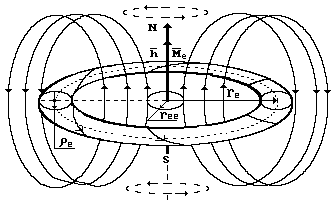
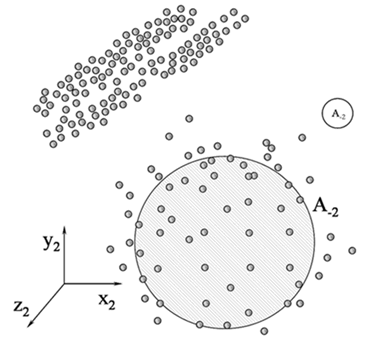
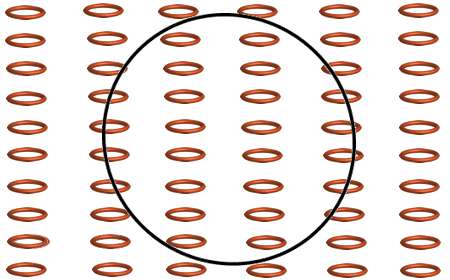
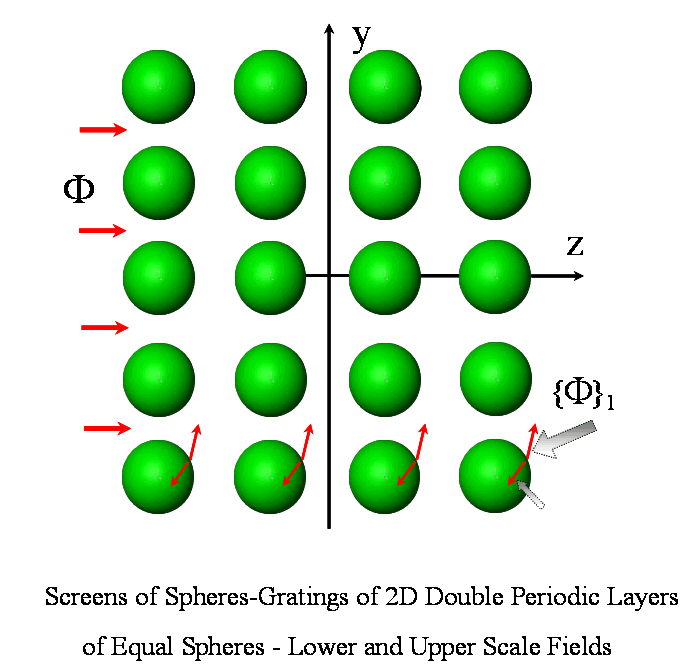
-468x280.gif)
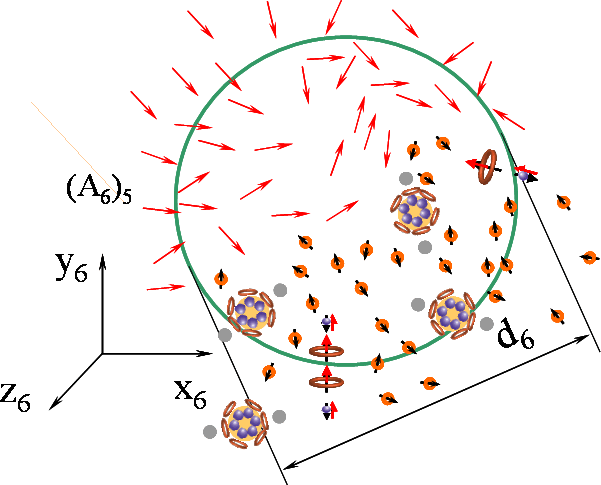
The Annals of Frontier and Exploratory Science
Vladi S. Travkin
Hierarchical Scaled Physics and Technologies (HSPT), Rheinbach, Germany, Denver, CO, USA
Abstract - for Heterogeneous Particle Physics - (HtPP)
In this group of a few papers, manuscripts placed in Heterogeneous Classical Mechanics science and now for Heterogeneous Particle Physics - (HtPP) in HSP (Hierarchical Scaled Physics), about the "so-called" Many-Body and n-body problems (MBP) [1-13] as they have being stated through the ~3-3.5 hundred years in COH physics as the Point-mass One-phase mathematics mostly based on statements we would address more directly and with more straight hits on these impaired parts of COHP in comparison to HSP with a discrepancy level that senior years university students, grad students can apprehend.





-468x280.gif)

Various kinds of Sub-atomic and Continuum Media singular and Arrays (Clouds) of Particles, Atoms, Molecules that have usually the interactions of different kinds. In COHP the Interaction of particles and bodies either are taken falsefully via mathematical none-physical One-scale methods, or at Sub-atomic scales just prohibited as the none-existing and taken via Superposition also the One-scale "magnificent" simplification "methods" of the first half of XX century. And up to nowadays in COHP.
Let's make a direct comparison of the very established in COHP MBP literature the mathematical COHP MBP statement and for the same physical MB problem the formulation of the HSP MB problem governing equations.
The Many-Body Problem (MBP) for the atomic, sub-atomic particles in COHP is the fantastic funny "ravery" about how to adjust COHP Point-Mass-Charge-Spin (PMCS) imaginary particles theories about dynamics of Imaginery "particles" with the some experimental (often heavily adjusted also) results [13].
On the other side the much older COHP attempts for the MBP as for the n-body gravitational mostly interaction of mass-points, see in Wiki, for example, [12] and other astronomical literature is the ficticious also pure mathematical kind of problem about interaction of N mass-points.
The COHP mathematical formulation and the set of governing equations for the just dynamics of a cloud of N interacting via gravitation or/and electromagnetic fields particles (bodies) writes in as a set of N momentum equations, for example, for only gravitation interaction

While, and this is not accidental that in no one textbook there is any explanation exists that the summation of only the pair-wise interactions over the only right hand side of the equations is at least the two-fold irregularity involved in this way into equations formulation.
And Newton knew about this. He just did not forecast this kind of so wide, so simplified interpretations of his 2-nd law written actually for a one particle - Local dependence. One more incorrectness in writing equations (1ort) for a system of continual particles is that taken into account only the pair-wise force interactions?! Others, those of the higher order of interaction between particles/bodies are not Known and Exist in COHP openly? Non-local interactions were taboo and not known in XVIII - XX (first half).
Another great physical first of all imbalance is that in this equation its left and right parts are not corresponding one to another physically. The left part is the Local effect mathematical expression - while the right hand side is the rood (approximate) one-phase Non-local interaction mathematical derivation.
And it is not so innocent mishap as many can imagine. We wrote about this imbalance in some other extended articles, manuscripts, chapters [1-2,6-9,14-32]. More on that - the Local One-phase formulation of the Non-local Two-phase Two-scale problem of Gravidynamics of a few or Many bodies/particles simply is inadequate physical and mathematical formulation and statement of gravidynamics MBPs.
The verbal only explanation of this is that the One-phase Local MBP formulations are underdetermined, lack of needed formulations.
One more great imbalance in COHP MBP formulation and statements is that all COHP MBPs are the One-phase One-scale physical and mathematical statements and understanding of this kind of interactive dynamics of particles/bodies. In the proper stated MBP in HSP the locality, scaling, and Polyphase presense issues are taken care of [1-11,14].
If we write the momentum dynamics equation for a continuum scale size particle moving in an air, for example, this would be as of the following COHP not often used model

where

 is
the dynamic viscosity of the continuum model fluid (air) around the particle
and where the vector
is
the dynamic viscosity of the continuum model fluid (air) around the particle
and where the vector

 is
the inward to particle from air directed differential area
is
the inward to particle from air directed differential area

 =
=

 and where the second term in the r.h.s. is generally incorrectly calculated
one as long as in COHP physicists do a hundred years the wrong model for the
electromagnetic interaction force - the Lorentz force. The one-side-one-charge
force [33-35].
and where the second term in the r.h.s. is generally incorrectly calculated
one as long as in COHP physicists do a hundred years the wrong model for the
electromagnetic interaction force - the Lorentz force. The one-side-one-charge
force [33-35].
And we know why COHP physicists do this simplified one charge incorrect conjecture? That is because in COHP physicists don't know - How to make the Collective - not pair-wise, but Interaction for Many-Body and similar Problems? Which is the Electromagnetic and Spinning Collective Interaction within a Cloud of particles or a Piece of material. Not just a Linear Superposition Interaction that like "justifies" Summation of Pair-wise Two-particle Force Interaction (SPTFI) [14-19].
Then it needs to be confirmed that the point-mass idealization of XVII-XX-XXI centuries in equation (1) is made here for analysis taking to be closer and following the much established in COH physics of Point-Mass-Charge-Spin (PMCS) interpretation of natural physics processes at sub-atomic scales.
In the proper (full) HSP MB statements the left and right parts of these problem Governing Equations (GE) are taken as for distributed spatial matters [1-6,9,11,15-19].
The same size continuum particle moving in the aether only while considering the scale almost the same or the same as above has the dynamics equation

where

 is
the dynamic coefficient (similar to dynamic viscosity) of the continuum model
aether around the particle and where the vector
is
the dynamic coefficient (similar to dynamic viscosity) of the continuum model
aether around the particle and where the vector

 is
the inward to particle from aether directed differential area
is
the inward to particle from aether directed differential area

 =
=

 ;
and where the r.h.s. first term assumes the quite different disclosure and
mathematics - if we do consider the particle (pi) as the solid body at any
scale, including and sub-atomic scales.
;
and where the r.h.s. first term assumes the quite different disclosure and
mathematics - if we do consider the particle (pi) as the solid body at any
scale, including and sub-atomic scales.
Where the "internal" interface combined surface

 is much larger then the Continuum only scale surface
is much larger then the Continuum only scale surface

 ,
because the former includes into its value and internal for particle
(continuous) interface "Surface"
,
because the former includes into its value and internal for particle
(continuous) interface "Surface"

 of all particles atoms within the REV
of all particles atoms within the REV

At the same method - if we consider the flow of
aether's phase

 inside of each condensed particle
(
inside of each condensed particle
(

 )
as well as outside of the particle's condensed matter volume - we need to
take into account the difference of aether flow inside and outside of a
separate particle.
)
as well as outside of the particle's condensed matter volume - we need to
take into account the difference of aether flow inside and outside of a
separate particle.
When using the special technique considering the each atom as a special particle model [1-2,9,11,15-19,29-30] for each atom (i-th) we can write this approximate equation of dynamics

where

 and
and

 ,
,

 - subvolume of aether in the REV occupied or filled with the gaseous substance
of aether, and
- subvolume of aether in the REV occupied or filled with the gaseous substance
of aether, and

 - is the subvolume of a particle body (condensed state) in the REV.
- is the subvolume of a particle body (condensed state) in the REV.
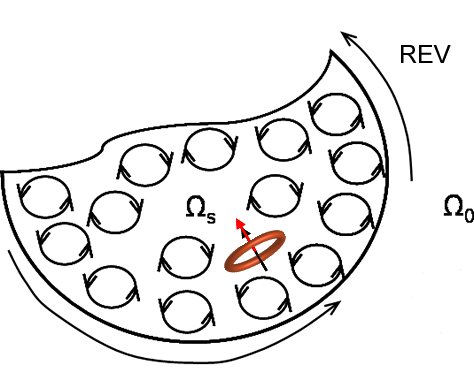
Figure: Schematic of Continuum Media (CM) (or Condensed state) particle with rotation and some SAP spinning inside of that particle. Free area ourside of the particle is filled with the aether of course.
Also the term with

 - is the Collective Interaction of this particle-atom (the additional
interactive EM force with the function of the Lorentz force, but not the
Lorentz force), with all other in the substantially valuable and performing
the role
- is the Collective Interaction of this particle-atom (the additional
interactive EM force with the function of the Lorentz force, but not the
Lorentz force), with all other in the substantially valuable and performing
the role

 in the 2nd Newton like law for atoms.
in the 2nd Newton like law for atoms.
Why this equation of high regard HSP theory is still may be called
approximate on the Lower scale single particle-atom dynamics formulation?
Just because the force of interaction due to electromagnetic interaction

 is still defined here in a vague mode.
is still defined here in a vague mode.
To make the EM interaction strictly in accordance to HSP we need to involve physics and modeling tools for Electrodynamics 2 [24-26] and of Spinning physics [20-22].
Now - the dynamics equations (simplified still) for atoms in the continual particles and in the outside aether area or outside Two- or more phase volume, including the aether, will be as the following

For each atom at the

 physical boundary the first r.h.s. term won't be included. While for each
atom outside of
physical boundary the first r.h.s. term won't be included. While for each
atom outside of

 and within the
and within the

 vice sersa the second r.h.s. term will vanish.
vice sersa the second r.h.s. term will vanish.
Now - when we transform the movements of the particle's
atoms and the phase

 or
or

 of the aether - we would like to compare and explain the two equations
(2) for the scale of a one Continuous (solid phase) particle and the Upper
scale dynamics equation (that we developed and published in many papers
[1-5,9,15-19,24-26,28-30]) in the REV.
of the aether - we would like to compare and explain the two equations
(2) for the scale of a one Continuous (solid phase) particle and the Upper
scale dynamics equation (that we developed and published in many papers
[1-5,9,15-19,24-26,28-30]) in the REV.
That means the usual known problem of comparing and determining the connection of the equation (2) to this one


and the whole averaged r.h.s. of the electron dynamics equation in the aether


which was written for a cloud of electrons with the interactive electromagnetic polyfields from the moving other electrons.
Following this equation we write down the Upper scale momentum equations for a Solid State (center of mass - the full dynamics set of equations for SS or sub-atomic scale particles imbraces more governing equations - which we write out in other publications) particle


and the whole averaged r.h.s. of the equation


and for atomic scale particles - atoms


with the whole averaged r.h.s. of the equation


which should be compared to equations (1,2) for analysis of the question - What kind of additional forces act (have an impact) upon the separate ( or a single particle - if the problem can be confined to the dynamics of "identical" particles in the 1D moving (flow) of a cloud) particle in the cloud of particles.
Intermediate Summary
The analysis given here only for the Two-scale and only the momemtum dynamics of particles Governing Equations (GE). The other sets of GE, the equations for both phases and for electrodynamics and aetherodynamics should be added to complete this Two-scale Two-phase particles dynamics model.
This theory, manuscripts, papers are the content and sense of what W.Heisenberg thought, dreamed, and wrote about as of "the real particles dynamics" as the genuine narrative of dynamics of Sub-Atomic particles.
Students - are you aware of that because of the absence, none of tools, theories in COH physics in ~1910-20s - there is NO Sub-Atomic Particles (SAP) dynamics in COHP? Because the meaning of SAP as of the particles - the pretty small volumetric objects had been prohibited in COHP since ~1910-20s.
You don't know about this prohibition because professors prohibited to tell you on this! Because if Particles Dynamics Real (PDR) exists - then there is no need to keep and talk about faked QM and QED? Meaning they were created not specifically to fake students and public - but because there were no TOOLS, theories in that time 1910-1920 to treat SAP as physical objects. That is because and Einstein in passing, with hidden sense words - not openly, and W.Heisenberg spoke - that there were no opportunity to theorize about the SAP - but only after acceptance of QM.
E.Madelung's equations of quantum hydrodynamics were not finally approved - yes, they also were lacking of important features for modeling of SAP [1,2], but still they were better off than the QM. Simple - that QM was completely mathematical more straightforward, easier, directly applied and incorrect fundamentally [27] - but Madelung's quantum hydrodynamics equations were even not solvable in a good sense at that time 1920-30s - there were no computers, No Heterogeneous Media theories in physics and even in mathematics, no computational mathematics - that kind of mathematics (not the calculation of ordinary differential or algebraic equations) was created later on after the WWII specifically for massive calculations of partial differential equations that nobody could think to calculate in 1910-1930s, no simulation methods, etc. then.
Key words: Multiscale; Polyscale; Polyscale modeling; Heterogeneous media; WSAM theorem; Averaging theories; Polyscale physics; Two-phase Two-scale dynamics; Homogeneous Electrodynamics; Heterogeneous electrodynamics; Sub-Atomic modeling; Particles modeling; Elementary particles dynamics; Collective interaction; HSP-VAT; Scaleportation; Many Body Problems (MBP).
References:
1. Travkin, V.S., "What Classical Mechanics of XVIII Provided in XX Has Done Wrong to the Base of Mechanical Science Including the Classical Mechanics of Continuum Particles and Conventional Orthodox One-scale Homogeneous Particle Physics", http://travkin-hspt.com/rottors/classmechwrong/classmechwrong.htm, (2014)
2. Travkin, V.S.,"The Major Forces Have Been Missing From Governing Equations for Dynamics of Sub-atomic and Continuum Particles, Bodies in XVIII - XX ", http://travkin-hspt.com/rottors/forcemissing/forcemissing.htm, (2014)
3. Travkin, V.S., Physics of Many-body Continuum Media Problems. Not Only Mathematics. Physics 2, http://travkin-hspt.com/elastic2/manybody/manybody.htm, (2016)
4. Travkin, V.S., Physics of Many-body Particulate Media Problems. Not Only Mathematics. Physics 2, http://travkin-hspt.com/parphys2/manypartibody/manypartibody.htm, (2016)
5. Travkin, V.S., Physics of Many-body Atomic Media Problems. Not Only Mathematics. Physics 2, http://travkin-hspt.com/atom2/manyatombody/manyatombody.htm, (2016)
6. Travkin, V.S., "Wrong and Inadequate None-physical "Solutions" of Many-body (and n-body) Problems in COHP Holding Back Contemporary Science and Mankind in General. Physics 2," http://travkin-hspt.com/classmechht/mbphypomech/mbphypomech.htm, (2016)
7. Travkin, V.S., "Scaled Modeling of Interaction and Interscale Hidden in COHP Forces and Effects in the Sub-Atomic Particle Arrays (Clouds). Physics 2," http://travkin-hspt.com/parphys2/modhiddenforces/modhiddenforces.htm, (2016)
8. Travkin, V.S., "Interscale Hidden in COHP Forces upon Interacting Sub-Atomic Particles (They are Always Interact) - in a Cloud of Identical Particles. Physics 2," http://travkin-hspt.com/parphys2/subatomhiddenforces/subatomhiddenforces.htm, (2016)
9. Travkin, V.S., "Two-phase Two-scale (2P2S) Two Coordinate System (2^3PSC) Dynamics of Interaction of Rotating/Spinning Arrays of Particle and/or Bodies. Physics 2," http://travkin-hspt.com/classmechht/2p2s2cdyninterpart/2p2s2cdyninterpart.htm, (2016)
10. Travkin, V.S., "Experimental Set-ups for Measurement of Interscale Hidden in COHP Interactive Forces in Particle Beams in Accelerators. Physics 2," http://travkin-hspt.com/exscience/interforcebeam/interforcebeam.htm, (2016)
11. Travkin, V.S., "Dynamics of One Electron and an Electron Array in Weak Magnetic Fields. Physics 2," http://travkin-hspt.com/eldyn2/2electronmagnetic/2electronmagnetic.htm, (2016)
12. "n-body problem," http://en.wikipedia.org/wiki/N-body_problem#Other_n-body_problems, (2015)
13. "Many-body problem," https://en.wikipedia.org/wiki/Many-body_problem, (2015)
14. Travkin, V.S., "Classical Mechanics Attempts for Description of Atomic Physics (ClM One-scale One-phase Homogeneous Atomic Physics - ClMO2HAP) Phenomena ," http://travkin-hspt.com/parphys2/clmechonesc1/clmechonesc1.htm, (2014)
15. Travkin, V.S., "Two-Scale Three-Phase Regular and Irregular Shape Charged Particles (Electrons, Photons) Movement in MHL Electromagnetic Fields in a Vacuum0 (Aether)," http://travkin-hspt.com/parphys2/abstracts/twoparticlesshort-ab.htm, (2013)
16. Travkin, V.S. and Bolotina, N.N.,"Two-Scale Two-Phase Formation of Charged 3D Continuum Particles - Sphere and Cube From Electrons in a Vacuum0 (Aether). An Example of Scaleportation of Charge from the Sub-Atomic to Continuum Charged Particles, Conventional MD Cannot be Applied," http://travkin-hspt.com/parphys2/abstracts/subtocontin-ab.htm, (2013)
17. Travkin, V.S. and Bolotina, N.N., "One Structured Electron in an Aether (Vacuum0) Electrodynamics, Many Electrons in an Aether Fixed in Space - the Upper Scale Galilean Electrodynamics ," http://travkin-hspt.com/parphys/abstracts/stillelectrons-ab.htm (2011)
18. Travkin, V.S. and Bolotina, N.N., "Electrons and CMBR (Cosmic Microwave Background Radiation) Flux of Photons in a Vacuum0 (Aether) - Two-Scale Galilean Theory ," http://travkin-hspt.com/parphys/abstracts/elcmbr-ab.htm (2010)
19. Travkin, V.S., "Top-Down and Bottom-Up Hierarchical Processes in the E-Cat Nuclear Reactor. Physics 2," http://travkin-hspt.com/coldlenr/ecathier1/ecathier1-ab.htm, (2012-2013)
20 . Travkin, V.S. and Lemel, I.I., "Experimentally Based Two-scale Dynamics Modeling of Polyphase Sub-atomic Spinning Particles in the Aether," (in Russian) http://forum.za-nauku.ru/index.php/topic,4000.0.html, (2016)
21. Travkin, V.S., "Torsion" or Spinning (Rotation) Physics Scaled (SPS), http://travkin-hspt.com/rottors/index.htm. (2003-2014)
22. Travkin, V.S., "Spinning or "Torsion" Mechanics in "Homogeneous" Media? Is it Possible?," http://travkin-hspt.com/rottors//torsmechhom/torsmechhom2.htm, (2003-2014)
23. Travkin, V.S., Continuum Mechanics of Heterogeneous (Ht) Media; Elasticity, Plasticity, http://travkin-hspt.com/elastic/index.htm, (2005)
24. Travkin, V.S., What's Wrong with the Pseudo-Averaging Used in Textbooks on Atomic Physics and Electrodynamics for Maxwell-Heaviside-Lorentz Electromagnetism Equations, http://travkin-hspt.com/eldyn/maxdown/maxdown.htm, (2009)
25. Travkin, V.S., Incompatibility of Maxwell-Lorentz Electrodynamics Equations at Atomic and Continuum Scales, http://travkin-hspt.com/eldyn/incompat/incompat.htm, (2009)
26. Travkin, V.S., Electrodynamics 2 - Elements 3P (Polyphase-Polyscale-Polyphysics), http://travkin-hspt.com/eldyn2/index.htm, (2013)
27. Travkin, V.S., Statistical Mechanics Homogeneous for Point Particles. What Objects it Articulates? http://travkin-hspt.com/statmech/index.htm, (2014)
28. Travkin, V.S., Solid State Polyscale Physics. Fundamentals, http://travkin-hspt.com/solphys/index.htm, (2014)
29. Travkin, V.S.,Atomic and Subatomic Physics 2 - Elements 3P, http://travkin-hspt.com/atom2/index.htm, (2003-2015)
30. Travkin, V.S., "Concepts for SHSP: HSP Conceptual Vision and Methods in Application to Spinning (Rotation) Heterogeneous Scaled Physics (SHSP)", http://travkin-hspt.com/rottors/concepts/concepts.htm, (2014)
31. Travkin, V.S., "What is in use in Continuum Mechanics of Heterogeneous Media as of Through ~1950 - 2005?" http://www.travkin-hspt.com/elastic/whatsupf/whatsup.htm, (2005-2006)
32. Travkin, V.S., "Who Are in the Continuum Mechanics Continuing to Dwell in an Ivory Tower? Who Tries to Re-Invent the Wheel? What Are the Damage and Financial Loss?" http://www.travkin-hspt.com/elastic/ivorytower/ivorytower.htm, (2006)
33. Klyushin, J. G., "Field Generalization for Lorentz Force Formula," Galilean Electrodynamics, Vol. 11, No 5, (2000)
34. Klyushin, J. G., Some Fundamental Problems of Electro - and Gravidynamics, St. Petersburg, RF, (2007)
35. Klyushin, J. G., Electricity, Gravity, Heat - Another View, St. Petersburg, RF, (2012)
******************************************************************************************************
The following article will describe and explain in more or less simple text and mathematics the scaled subjects regarding the 3P Hierarchical Physics and Mathematics modeling and simulation phenomena for the Polyscale electromagnetic particles/bodies and atoms, molecules in the clouds of them and with collective interactions:
Travkin, V.S., "Scaled Modeling of Interaction and Interscale Hidden in COHP Forces and Effects in the Sub-Atomic Particle Arrays (Clouds). Physics 2," ** http://travkin-hspt.com/parphys2/modhiddenforces/modhiddenforces.htm
Access to article may be obtained for qualified parties. Apply for authorization.
Some of the relevant HS physics and mathematics outcomes, methods, and derivation procedures can be found in this Hierarchical Scaled Physics disciplines - http://travkin-hspt.com/index.htm, some other references on Physics 2 sciences and in closely narrated materials. =================================================================================================
Any information displayed here is the proprietary information in the area of
"Scaled Modeling of Interaction and Interscale Hidden in COHP Forces and Effects in the Sub-Atomic Particle Arrays (Clouds). Physics 2."
This is not relatively the Well Known problem in physics, meanwhile, within the COHP it has been even formulated wrongly - read our analysis and texts on Conventional Homogeneous One-phase Physics disciplines great Imbalances. Nevertheless, this kind of problems are the Gatekeeper problems in 2nd Physics and for COHP - the history of One-scale Homogeneous Particle Physics tells this - and they can not be advanced, solved within the Homogeneous One-Scale physics and mathematics and/or specifically OH particle physics.
![]()

![]()